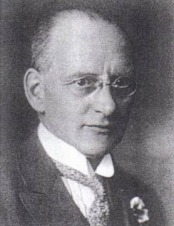Keele University Korfball Club
History of the sport:

Korfball was born from a Dutch school teacher's desire for a sport that both male and female students could play together. Nico Broekhuysen's unusual game quickly spread across the world, and in 1923 The Federation International de Korfball (renamed The International Korfball Federation in 1978) was formed.
Curiously, the literal translation of the name ‘Korfball’ is in fact basket ball. Although the game has many similarities with the better known American sport, it is by no means the same. For starters, traveling with and dribbling the ball are against the rules!
Playing Korfball:
A Korfball team is made up of 8 players, half male and half female. They are split equally across the two halves of the court, taking turns to either defend or attack their opposing team. Every two goals, the two groups swap ends and roles. The sport emphasises all-round skills, co-operative play and gender equality.
As with most ball sports, the main aim is to pass a ball from one end of the pitch to the other before shooting it through a ‘basket’. However there is one big difference within Korfball – other than staying within their half of the court, players have no set positions.
Some basic rules:
* No running with the ball or dribbling
* No deliberate physical contact
* During normal play, no time limit with the ball
* Players may not defend players of the opposite sex
Shooting:
An attacker must break free from his/her defender in order to take a shot. This can be done either by:
* Moving back from the defender away from the korfball post – a “long shot”.
* Running past the defender towards the korfball post – a “running-in shot”.
Distinct techniques have been developed as the most effective ways to execute these shots, but these are not compulsory – players can improvise.
Defending:
An attacker cannot shoot when they are being “defended”. This occurs when a defender of the same sex is:
* Between the attacker and the korfball post.
* Within arm’s length of the attacker’s torso.
* Facing the attacker with an arm up.
An attacker who takes a shot while defended gives away a free pass to the defending team. When defending, try to stay between your attacker and the post at all times!
Collecting:
Before shooting, it is useful for one of the attacking division to take a position under the post in order to collect and recycle the ball if the shot misses. Any player in the attacking division can take this position, known as “collector”.
Feeding:
Another useful position that can be taken by any of the attacking division. The “feeder” receives the ball under the post and stands facing outwards. They then pass the ball to an attacker who has broken free from their defender, either for a long shot or a running-in shot.
Restart:
A restart is taken when:
* There has been a minor infringement
* The ball has gone out of play
* After a goal has been scored
* At the start of each half of the game
The pass must be made within 4 seconds of the referee’s whistle and must travel 2.5 metres.
Free pass:
A free pass occurs after a serious infringement. The players must stand 2.5 metres from the player taking the free pass and the pass must be made within 4 seconds of the referee’s whistle. A goal may not be scored directly from a free pass.
Penalties:
A penalty is awarded when an infringement prevents a scoring chance. The penalty taker shoots from 2.5 metres in front of the post. All other players must stand 2.5 metres away from the post and the penalty taker. There is no time limit.
With thanks to:
The majority of the above information was taken from a leaflet produced by Charlie May for the 2008 Fresher's Fair.
